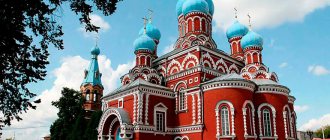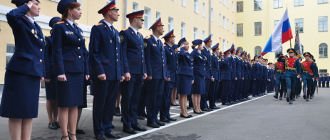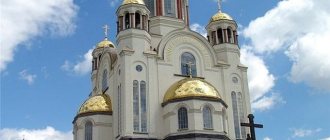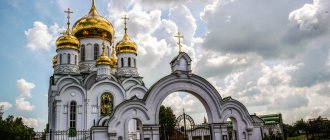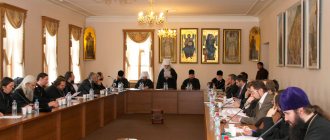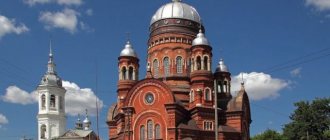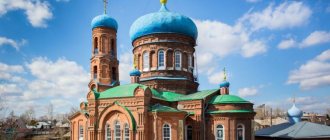Bishops
- St. Theodosius (Kharitonov) (1602 - December 18, 1616)
- Onufry (February 15, 1615 - July 23, 1628) [7]
- Macarius (January 13, 1629 - January 28, 1638)
- Raphael (May 17, 1638 - December 20, 1640)
- Pachomius (June 17, 1641 - May 31, 1655)
- Sschmch. Joseph (4 May 1656 - 11 May 1671)
- Parthenius (February 25, 1672 - October 5, 1680)
- Nikephoros (June 27, 1681 - October 28, 1682) [8]
- Savvaty (March 4, 1683 - July 1, 1696) [9]
- Sampson (2 February 1697 – 3 April 1714) [10]
- Joachim (22 January 1716 - 23 June 1723) [11]
- Lavrenty (Gorka) (September 8, 1723 - September 7, 1727)
- Varlaam (Lenitsky) (September 7, 1727 - June 7, 1730)
- Lev (Yurlov) (June 8, 1730 - December 3, 1730) [12]
- Hilarion (August 15, 1731 - June 9, 1755) [13]
- Methodius (Petrov) (May 10, 1758 - May 29, 1776)
- Anthony (Rumovsky) (September 19, 1776 - November 9, 1786)
- Nikifor (Feotoki) (November 28, 1786 - April 16, 1792) [14]
- Tikhon (Malinin) (May 18, 1792 - November 14, 1793)
- Theophilus (Raev) (February 6 - March 11, 1794)
- Platon (Lyubarsky) (March 11, 1794 - August 18, 1805)
- Afanasy (Ivanov) (August 18, 1805) [15]
- Anastasy (Bratanovsky-Romanenko) (December 20, 1805 - December 9, 1806)
- Sylvester (Lebedinsky) (January 25, 1807 - January 10, 1808)
- Gaiy (Tokaov) (January 10, 1808 - February 20, 1821)
- Jonah (Vasilievsky) (April 26, 1821 - October 1, 1821)
- Abraham (Shumilin) (October 29, 1821 - May 7, 1824)
- Methodius (Pishnyachevsky) (June 27, 1824 - September 30, 1825)
- Pavel (Sabbatovsky) (January 26, 1826 - February 7, 1832)
- Vitaly (Borisov-Zhegachev) (March 12, 1832 - December 4, 1840)
- Stefan (Romanovsky) (March 1 - December 4, 1841)
- Smaragd (Kryzhanovsky) (December 31, 1841 - November 12, 1844)
- Evgeny (Bazhenov) (November 12, 1844 - April 15, 1856)
- Afanasy (Drozdov) (April 15, 1856 - April 6, 1870)
- Feognost (Lebedev) (June 27, 1870 - December 7, 1874)
- Chrysanthus (Retivtsev) (December 29, 1874 - December 8, 1877) [16]
- St. Gerasim (Dobroserdov) (December 8, 1877 - June 24, 1880)
- Evgeny (Shereshilov) [17] (June 26, 1880 - December 16, 1889) [18]
- Pavel (Vilchinsky) (December 16, 1889 - November 21, 1892)
- Isaac (Polozhensky) (November 21 - December 19, 1892) [19]
- Pavel (Vilchinsky), 2nd time (December 19, 1892 - November 13, 1893)
- Mitrofan (Nevsky) (November 13, 1893 - August 10, 1896)
- Sergius (Serafimov) (August 10, 1896 - April 13, 1902)
- Tikhon (Obolensky) (1902) v/u, ep. Nikolaevsky
- Innocent (Kremensky) (1912) v/u, ep. Tsarevsky
- Innokenty (Kremensky), 2nd time (January 7 - February 17, 1913)
- Leonty (Wimpfen) (August 1917 - September 26, 1918) v/u, bishop. Tsarevsky
- Anatoly (Sokolov) (1918 - 1920) high school bishop. Enotaevsky
- Anatoly (Sokolov), 2nd time (1920 - July 1922) in/u, ep. Tsarevsky
- ? Peter (Sokolov) (1923) v/u
- Stefan (Gnedovsky) (1927 - 1928) high school bishop. Enotaevsky
- Andrei (Komarov) (October 28, 1929 - October 13, 1930) v/u, ep. Volsky
- sschmch. Alexy (Orlov) (September 1930 - February 11, 1931) high school, bishop. Mamalizhsky
- Grigory (Chukov) (1942 - 1943) supreme, archbishop. Saratovsky
- Gury (Egorov) (1952 - 1953) v/u
- Pimen (Khmelevsky) (February 27 - July 30, 1968) high school bishop. Saratovsky
- Filaret (Karagodin) (August 12 - October 20, 1992) diocesan, bishop. Dmitrovsky
ASTRAKHAN AND KAMYZAK DIOCESE
After the Astrakhan Khanate annexed to Russia in 1556, its territory was under the jurisdiction of the Kazan bishops, who after 1589 were called “metropolitans of Kazan and Astrakhan.” In the 2nd half. XVI century 2 monasteries were opened in Astrakhan: Astrakhan in the name of the Holy Trinity and Astrakhan in honor of the Transfiguration of the Lord. In 1602, the Astrakhan and Terek diocese was established on the vast and sparsely populated lands of the N. Volga region; the former bishop became its first bishop. Abbot of the Trinity Monastery, St. Feodosius (Kharitonov). Tsar Boris Feodorovich Godunov granted the maintenance of the Astrakhan bishop's house to the village. Tenki Sviyazhsky district money and grain supplies, new benefits in addition to the previous ones were granted to the Trinity Monastery. After 1604, an Astrakhan monastery arose in honor of the Ascension of the Lord, for the maintenance of which fishing on the river was allocated. Kutum. In 1605, bishop. Theodosius was elevated to the rank of archbishop.
Astrakhan Kremlin Astrakhan Kremlin The significant distance of the Astrakhan region from the center, the constant military danger from the Crimean Tatars and steppe inhabitants had a negative impact on the life of the region, including the church. The only relatively steadily developing Russian. the settlement was Astrakhan. Most of the inhabitants of the fortresses were service people - yearlings, walking people and Cossacks; local churches did not have stable parishes and were maintained mainly at the expense of the rogue. The Astrakhan mon-ri, unlike the mon-riy of the central regions of Russia, due to the constant military danger, have not created a stable economy. The consequences of the Time of Troubles were extremely difficult for the Astrakhan region: the Tsaritsyn and Saratov fortresses were completely destroyed, Astrakhan and the Terek fortress were depopulated, the Trinity Monastery was plundered, and the Spassky Monastery was severely damaged. Within 9 years after the death of St. Theodosius († 1606) The Astrakhan see became a widow, only in 1615 a new archbishop arrived in Astrakhan. Onuphry. In memory of the liberation of Astrakhan from the troops of I.M. Zarutsky and M. Mnishek, a church was erected. in honor of the Kazan Icon of the Mother of God.
Thanks to government support, the diocesan economy in the 20-50s. XVII century was quickly restored. The main source of income for the bishop's house and Mont-Rey was not land, as in the Center. Russia, and the fishing and salt industries, there are known cases of granting fishing to the white clergy. Mont-ri developed the territories adjacent to the city; settlements arose near Mont-ri, where monastery servants lived. All R. XVII century in Astrakhan there were 5 mon-rays and approx. 20 churches. The situation outside Astrakhan and its surroundings was completely different; the number of settlements in the N. Volga region increased slightly. In Terki in the 1st half. XVII century the cathedral Resurrection Church is mentioned. and the Annunciation Monastery, in Tsaritsyn - c. in the name of John the Baptist and the monastery in the name of the Most Holy. Mother of God, in Saratov - the Mother of God and Holy Cross monasteries, in Black Yar and Krasny Yar there was only a cathedral church. Despite their small numbers, already at that time Mon-ri and the temples of A.E. turned into centers of spiritual enlightenment in the region. Not only residents of the surrounding settlements, but also Cossacks and Christians from Transcaucasia came to Astrakhan and Tsaritsyn on pilgrimage. The clergy of the Astrakhan diocese launched active missionary activities among the steppe inhabitants.
In May 1656, Archimandrite was consecrated to the Astrakhan See. Astrakhan Trinity Monastery Sschmch. Joseph. In May 1667, the Great Council discussed the establishment of metropolitan districts in Russia and increasing the number of bishops. Particular attention was paid to the Astrakhan diocese; its bishop was granted the rank of metropolitan with the right to put on the sakkos and the right to perform a procession on a donkey on Vai Week. In 1671, when Astrakhan was captured by the rebel Cossacks led by S. T. Razin, Metropolitan. Joseph appealed to the townspeople to repent and confess to the king. Having captured the metropolitan, the rebels executed him after cruel torture. From the end XVII century sschmch. Joseph along with the abbot. Kirill, the founder of the Astrakhan Holy Trinity Monastery, were revered in the region as locally revered saints. In 1672, Tsar Alexei Mikhailovich deprived the Astrakhan clergy of a number of benefits and entrusted them with part of the state. expenses: the treasury was supposed to receive duties from the metropolitan fishing grounds, from the fishing grounds of the Trinity, Preobrazhensky, Ascension Mon-ray and the clergy of the cathedral church; the metropolitan, mon-ry and cathedral clergy had to confirm their rights to fishing and fishing.
Assumption Cathedral of Astrakhan. 1698–1710
Assumption Cathedral of Astrakhan. 1698–1710
Serious changes in the life of the diocese occurred during the reign of Peter I. In 1697, the tsar requested information about how much land the bishop's house and mon-ry had, how many people there were and what sums were spent on their maintenance. In the same year, by decree of the tsar, the Astrakhan governor I. A. Musin-Pushkin withdrew 10 thousand rubles from the bishop's treasury, in return the bishop's house began to receive 1996 rubles for maintenance. 16 alt. and 4 money per year. For the first time, church tribute was collected from 16 Astrakhan city churches; in total, 25 churches were levied with tribute throughout the diocese. Beginning in 1697, the Astrakhan metropolitans were obliged to send annual receipts and expenditure books to Moscow, and duties were ordered to be taken from the income received by the clergy from the sale of fish. In 1700, the Astrakhan Trinity Monastery, which for many years provided the maintenance of the diocese with its economic activities, was transferred to the jurisdiction of the Trinity-Sergius Monastery near Moscow, to which all buildings, lands, fields, fisheries and salt mines, previously belonged to the Astrakhan monastery. In 1705, the government reduced maintenance payments to Astrakhan monks and bishops' clerks. In the same year, a riot broke out in Astrakhan, initiated by Archimandrite Reuben of the Ascension Monastery. The reason for the riot, in addition to the deterioration of the economic situation of the population, was the government’s fight against the Old Believers, which were widespread in the region. In 1707-1708 The Volga region was involved in the uprising led by K. Bulavin. Despite the social tension on the N. Volga, Peter's government continued to reduce expenses for the maintenance of the clergy of the Astrakhan diocese. 2 years after the death of Metropolitan. Sampson († 1714) it was no longer a metropolitan who was appointed to Astrakhan, but a bishop, Joachim. In 1721, the Astrakhan Sretensky monastery was abolished, in 1723 the Astrakhan monastery in the name of John the Baptist (restored in 1727), previously the Ascension monastery was closed, the suburban Resurrection and Intercession monasteries were assigned to the bishop's house, from whose income they were supposed to receive maintenance. An archimandrite and 3 monks lived in the Tsaritsyn Trinity Monastery in 1720; in July 1722, the Tsaritsyn archimandrite was transferred to Astrakhan and the monastery was left without an abbot. The decline of church life was also observed in other cities of the diocese.
The position of the diocese changed noticeably after the Persians. the campaigns of Peter I in 1722-1723, when the authorities apparently realized that the Astrakhan region could play an important role in the development of Russia’s ties with the Transcaucasus. On Sept. In 1723, an associate of Archbishop was appointed to the Astrakhan See with the title “Bishop of Astrakhan and Stavropol”. Feofan (Prokopovich) bishop. Lavrentiy (Gorka), former. Archimandrite of the Moscow Resurrection Monastery. Established in the beginning. XVII century The Astrakhan judicial spiritual order in 1728 was reorganized into the Astrakhan spiritual consistory. In the 20-50s. XVIII century Astrakhan clergy began systematic missionary activity among the Kalmyks. In 1724 he was sent to the Kalmyk steppe by priest. Nikodim (Lenkevich), thanks to his preaching in 1725-1734. Up to 1,700 people were baptized. In 1732, at the suggestion of Archimandrite. Nicodemus in the Astrakhan Monastery of St. John the Baptist, a school was opened for the education of baptized Kalmyk children.
In the 2nd quarter. XVIII century Gradual settlement of the territories between Tsaritsyn and Astrakhan began. The creation of temples, mon-rays, and schools on them required significant material and human resources. To strengthen the financial position of the diocese, several were annexed to it. cities located to the north of it, with a much more developed church structure. In 1749, Astrakhan bishop. Hilarion achieved the addition of Penza and Korsun to his diocese, and the following year - Petrovsk and Mokshan; as a result, the Astrakhan diocese included more than 300 churches, 4 men. and 3 wives mon-rya, the size of the diocese and the number of churches became the largest during its entire existence. Ep. Hilarion was elevated to the rank of archbishop. The diocese existed within such vast borders until 1758, when part of its cities became part of the Tambov diocese. In 1773, the Astrakhan diocese included: the cities of Astrakhan, Tsaritsyn, Kizlyar, Dmitrievsk, Dubovka, Saratov, Petrovsk; fortresses of Krasny Yar, Enotaevskaya, Black Yar, Mozdokskaya, Felshanskaya; towns of Guryev, Akhtubinsky, Selitrinny. Throughout the diocese there were 259 churches, of which in Saratov and its tithes - 134, Petrovsk and its tithes - 48, Dmitrievsk and its tithes - 17, in Tsaritsyn - 6, in Dubovka with the Cossack villages - 6, in Astrakhan and its surroundings - 47 churches. All in. areas of the diocese, church structures were much more developed than in the south.
Since 1793, the Astrakhan see again began to be replaced by bishops with the rank of bishop. May 29 of the same year to control the south. territories of the diocese (Mozdok, Kizlyar, Ekaterinodar, Georgievsk, Alexandrovsk and Stavropol) the Mozdok Victoria was established, the first bishop. Gaiy (Takaov) became Mozdok and Mozharsky. Oct 16 In 1799, Victoria was abolished, its churches were transferred to the management of the Astrakhan bishops. In 1799 in the north. in the territories of the Astrakhan diocese, the Saratov diocese was formed; in 1829, the territory of the Astrakhan diocese was reduced again: Stavropol, Ekaterinodar, Mozdok, Georgievsk, Kizlyar became part of the newly established Novocherkassk diocese. In 1910-1921 in the diocese there was the Tsarevsky Victorian, in 1917-1931 - the Enotaevsky Victorian.
In 1778, a 3-class seminary was opened in Astrakhan, in 1818 it was reformed, and a district and parish theological school was created under it; since 1838, a Kalma class existed in the DS. language, in 1867 the Astrakhan DS was transformed into a 6-grade school. The Archbishop's concerns Afanasy (Drozdova) in Oct. In 1866, the diocesan wife was opened. school K con. XIX century under the jurisdiction of the diocesan school council there were 288 church schools, which consisted of approx. 10 thousand students. In 1815-1826 There was a branch of the Russian Bible Society in Astrakhan. On Sept. 1875 The Astrakhan Diocesan Gazette began to be published. In 1876, a diocesan library was opened in the abolished Spaso-Preobrazhensky Monastery in Astrakhan.
Chapel of the abbot. Kirill in the Astrakhan Kremlin. XVII–XIX centuries
Chapel of the abbot. Kirill in the Astrakhan Kremlin. XVII–XIX centuries
In 1871, the diocesan committee of the Orthodox Missionary Society was created to attract non-believers to Orthodoxy, ch. arr. Kalmyks. At the expense of the committee in 1877 in Calm. the first Orthodox church was built in the camp. temple. By order of Bishop. Mitrofan (Nevsky) in 1894, a 2-class missionary school-orphanage was opened at the bishop's house to prepare Kalmyk children for missionary service. In con. XIX century The committee began missionary activity among the Tatars, but it was not successful. The beginning of active missionary activity among sectarians and Old Believers was laid by Bishop. Feognost (Lebedev), who in 1873 founded the Church and Educational Brotherhood of the Holy Trinity in Tsarev (in 1876 the brotherhood moved to Astrakhan). In 1877, the position of missionary was introduced in the diocese to exhort the Molokans. Ep. Evgeniy (Shereshilov) founded the Cyril and Methodius Brotherhood in Astrakhan in 1885 to spread Orthodoxy. education, missionary work and the fight against sectarianism and Old Believers. In 1896, the department of the imp. began work in Astrakhan. Palestinian Orthodox about-va.
In 1823, at the bishop's department, guardianship for the poor of the clergy was opened, in 1877 bishop. Gerasim (Dobroserdov) established a diocesan home for the poor of the clergy, and an orphanage was soon created under it. In 1896, the diocesan candle factory opened.
In 1903, there were: 231 churches in the diocese, including 6 cathedrals, 9 monasteries, 173 parishes, 3 at state and charitable institutions, 2 house churches, 4 cemetery churches, 4 missionary churches, 1 camp church, 29 ascribed churches, and 27 chapels and houses of worship; clergy and clergy (except for monastics) - 695 people. In 1910, through the efforts of Bishop Georgy (Orlov), a floating church appeared in the diocese. in the name of St. Nicholas of Myra for the care of fishermen at sea (existed until 1916).
In 1902 St. right John of Kronstadt consecrated a temple in Astrakhan in the name of St. equal to book Vladimir, built in memory of the 900th anniversary of the Baptism of Rus'. In 1912, preparations began in the diocese for the glorification of Metropolitan. Joseph. Prot. I. Savvinsky published the brochure “St. Joseph, Metropolitan of Astrakhan,” where he collected information about miraculous healings through prayers to the holy martyr, in the same year on the initiative of Bishop. Feofan (Bistrov), the synodal commission opened the tomb of Metropolitan. Joseph for examination of the relics. The decision on the canonization of Sschmch. Joseph was accepted by the Local Council of the Russian Orthodox Church in 1918. Decree of the Patriarch of Moscow and All Russia St. Tikhon (Belavina) and St. Synod on All-Russian reverence for schmch. Joseph was received in Astrakhan in 1919.
Monasteries
- Astrakhan Blagoveshchensky (female)
- Astrakhan Ioanno-Predtechensky (male)
- Astrakhan Trinity (inactive)
- Astrakhansky Preobrazhensky (inactive)
- Vysokogorskaya Uspensko-Nikolaevskaya Churkinskaya hermitage (inactive)
- Zlatozubovsky Voskresensk-Mironositsky (inactive)
- Krasnoyarsk Rozhdestvensky (female)
- Pokrovo-Boldinsky (inactive)
Previously subordinate dioceses
- Saratov Holy Cross (inactive, now within the Saratov diocese)
Literature
- Blagonravov, M., Bishops of the Astrakhan diocese for 300 years of its existence from 1602 to 1902
, Astrakhan, 1902. - Savvinsky, I., priest, Historical note about the Astrakhan diocese for 300 years of its existence
, Astrakhan, 1903. - Savvinsky, I., Astrakhan diocese (1702-1902)
, Astrakhan, 1902, vol. 1. - Lopukhin, A. P., Glubokovsky, N. N., eds., Orthodox Theological Encyclopedia, or Theological Encyclopedic Dictionary
, St. Petersburg, 1900-1911, 12 vols.
It involves close interaction in the field of education and upbringing of youth, promotion of traditional family values and a healthy lifestyle. Today this issue was discussed by the participants of the ethno-confessional council chaired by the governor of the Astrakhan region Igor Babushkin.
“Our meeting is taking place shortly after the announcement of the Address of the President of Russia to the Federal Assembly. In it, the head of state paid special attention to saving the people of Russia,” noted Igor Babushkin. “The preservation of traditional spiritual values, primarily among the younger generation, plays an important role in this.”
The head of the department for youth affairs of the Astrakhan diocese of the Russian Orthodox Church, Priest Vitaly Semyonov, and the mufti of the Astrakhan region Rauf-hazrat Jantasov voiced their proposals on this issue.
“It is necessary to conclude bilateral agreements and develop joint action plans in the field of education and upbringing of youth, social development, a healthy lifestyle, and strengthening family values,” said Priest Vitaly. “In particular, we propose to make wider use of the experience of cooperation between the diocese and the regional registry office in the field of projects aimed at popularizing family values “The ABC of Family Education.”
As Deputy Prime Minister Dmitry Ovchinnikov informed the governor, preliminary meetings with representatives of the diocese and social services have already been held.
“We not only prepared an agreement on interaction with the Ministry of Education, but also included in it the Ministries of Culture and Tourism, Health and Social Development and Labor,” reported Dmitry Ovchinnikov. “After the May holidays we will sign the agreement.”
Executive Director of the all-Russian program “Save Life” Maria Studenikina spoke about measures to increase the birth rate in the Astrakhan region by preventing abortions.
Today Russia ranks one of the first places in the world in terms of the number of abortions. According to official statistics, 520 thousand cases of termination of pregnancy are registered annually. According to Maria Studenikina, reducing abortions will help improve the demographic situation in the country.
“One of our proposals is that every antenatal clinic must have pre-abortion counseling specialists. Now only 30% of these medical institutions have them. Meanwhile, about 20% of pregnancies are maintained as a result of such conversations.”
The governor instructed Deputy Prime Minister Ovchinnikov to analyze all the proposals and discuss them at one of the meetings of the regional cabinet of ministers.
